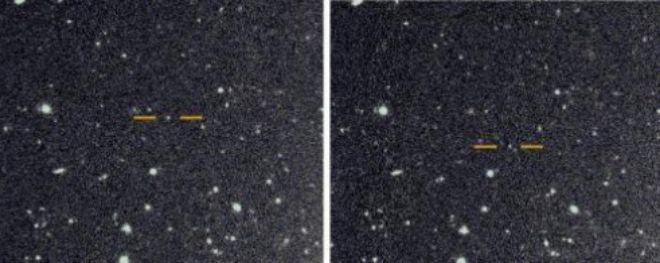- Solar System: They confirm the existence of geysers on the moon Europe
- Interview: 'The icy moons are the most interesting places to look for life in the Solar System'
- James Green: 'In a few years we will find life outside the Earth'
Until this Monday, Jupiter was the planet of the Solar System with more known moons (79). Saturn has snatched the top spot because, as the International Astronomical Union has just announced, 20 new satellites have been discovered , so it has at least 81.
The new worlds discovered have a diameter of about 5 kilometers . As stated by the Minor Planet Center, 17 of those moons move in an orbit opposite to the rotation of the planet around its axis, while the other three rotate in the same direction as Saturn.
Of the 20 new moons, the two closest to the planet take two years to orbit it while the furthest ones need three years to make a complete turn around it.
As explained in a press release Scott S. Sheppard, the scientist at the Carnegie Institution for Science who has led the discovery, " studying the orbits of these moons can reveal their origin , in addition to providing information on the conditions that were in the environment of Saturn at the time they formed. "
Names chosen by the public
The discovery of these 20 moons was made with the Subaru telescope located on the Mauna Kea volcano in Hawaii. " We are completing the inventory of small moons around giant planets using some of the largest telescopes in the world," says Sheppard, who highlights the "crucial" role of these satellites, as they help them determine how the System's planets formed and evolved. Solar.
Last year, Sheppard discovered 12 new moons orbiting Jupiter. The Carnegie Institution then invited citizens to participate in an online contest to choose the names of four of them. Such was the success of the call that, as Sheppard has advanced, they have decided to repeat the experience to baptize the new moons discovered on Saturn.
Saturn houses two of the most interesting moons of the Solar System: Titan and Enceladus. The first is the largest of those on this planet and has an atmosphere while Enceladus is a frozen world 500 kilometers in diameter, the tenth part of Titan. Together with Europe, a moon of Jupiter, these three satellites are the worlds in which scientists have more hopes of finding some kind of life.
According to the criteria of The Trust Project
Know more- Science and Health
- science
ClimateMillions of people participate in climate strikes today
ClimaLilly, the 'Greta' of Thailand that has managed to reduce plastic bags
Environment America has lost one in four birds in the last 50 years

